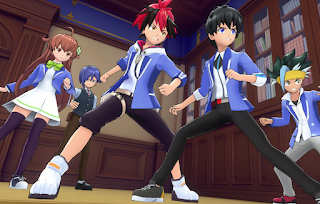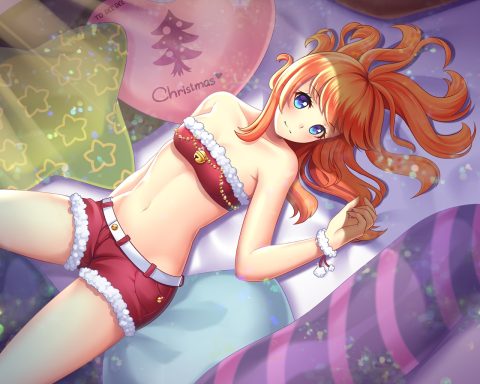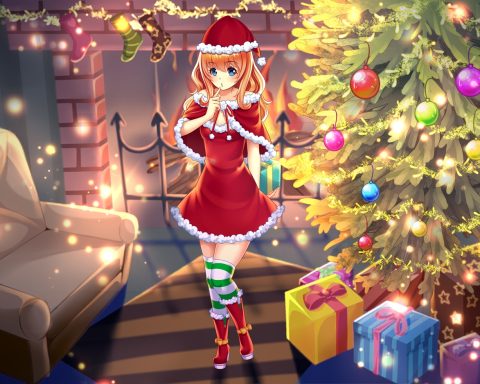Shadowverse: Champions Battle is a game that I have been waiting a very long time for. To be precise, 21 years. It was 21 years ago that the Pokémon Trading Card Game was released on the Game Boy Color, and as far as I’m concerned Champions Battle is the spiritual sequel to that.
To be clear – Shadowverse doesn’t play like the Pokémon TCG. We’ll get to the similarity shortly, but to talk about the gameplay first, they are entirely different, with Shadowverse being vaguely akin to Hearthstone, but with a couple of tricks of its own to help it stand out. You’ll be doing all the usual TCG things – summoning monsters to the table, boosting them with spells and effects, and then using them to attack either your opponent’s critters or the opponent directly. When the opponent hits 0 life points, you win the match. Shadowverse: Champions Battle has an almost obscene number of cards (600, spread across seven deck types), and with that comes the potential for hours of deck tweaking and strategy. Each deck type has a different play style and tactics within that play style, so if you get properly hooked into this game, you can go deep with it, though the existence of pre-built decks allows more casual players to enjoy the experience too.
The one major hook that distinguishes Shadowverse from Hearthstone and most other TCGs is the ability to evolve monsters mid-battle. You can only do this a couple of times in a battle, but evolving the card significantly boosts its power, might give it additional secondary effects, and can completely turn the tide of battle if used at the right time. It’s a great addition to both the tactics and presentation of the game, and helps to ensure that individual games are short and punchy – most will be over in a couple of minutes.
But to get back to the Pokémon TCG – Shadowverse: Champions Battle has a full narrative mode, and while we’re not talking about something that will be mistaken for Shakespeare or Sōseki here, the narrative is light and bubbly, single player-focused, and has a nice anime aesthetic (and anime cut-scenes). Combined, it is exactly what I would have imagined the Pokémon TCG would look like, if Nintendo and Game Freak had decided to modernise that 21-year-old classic. Putting aside the Yu-Gi-Oh games (I’m not a massive fan of either the aesthetics or core card game itself with that series), we just don’t get TCGs that look, feel, or play like that anymore, and it has been genuinely wonderful and nostalgic to experience it here.
Developers and publishers cottoned on to the potential for microtransactions and free-to-play nonsense with TCGs early on. In fact, because EA was out there very ethically blurring the line between video games that children play for fun and gambling, manufacturers of physical card games were making a fortune from “loot boxes.” Magic: the Gathering itself, first released way back in 1993, distributed its cards to players via randomised packs, with some incredibly rare cards being… well, very difficult to get. Sound familiar? That game certainly cost me a lot of my allowance money back before anyone twigged that random loot might be addictive.
So anyway, fast forward back to 2021, and the digital TCG has been a natural fit for free-to-play mechanics. The problem is that while I love TCG gameplay (like I said, Magic: the Gathering cost me a lot of money, and I even went to proper championships back in the day), in the world of video games I can’t stand the structures that support free-to-play. Menu screens are cluttered with a billion icons and virtual currencies that have been designed as painful busy-work explicitly to confuse players. Free-to-Play TCGs also don’t benefit from single-player content, since that consumes time with minimal purchases back to the developer, so they don’t generally indulge it (and when they do it’s as half-baked as almost every free-to-play game’s narrative is). Shadowverse itself is one of these games on PC and mobile, and I had no interest in it on that basis.
It’s the context that counts here. Give a serious TCG some lighthearted anime narrative, and suddenly the game takes on additional nuances that make all the difference. Suddenly the game goes from endless matches without purpose to matches that are driving at something. The behaviour of your opponent, when they’re AI-controlled, can’t ruin your own game experience. There’s no waiting around for people to take turns. The single-player TCG has all the mechanical joy of a good TCG, supported by a flow and structure that is so much more enjoyable than dealing with the inconsistent experience of online multiplayer.
There’s plenty to Shadowverse: Champions Battle, too. The difficulty scales nicely through the game, and there are plenty of AI opponents in the single-player mode – optional and essential alike – to give you a decently lengthy experience without ever touching online play. With that being said, if you do want to dip into the world of competitive Shadowverse, then that option is naturally there for you too. These kinds of games are the ones that sustain pretty healthy online communities for long periods of time, too, so you won’t need to worry about struggling to find a game for quite some time.
I’m really happy to see Cygames take the console adaptation of Shadowverse seriously and, rather than try and shovel a free-to-play thing on players, use this as an opportunity to broaden the appeal of Shadowverse, give the card game itself some context, and give fans the same kind of joy that they took out of Pokémon TCG all those years ago. With taut mechanics, a fun, light-hearted narrative, excellent production values and an almost obscene level of depth Shadowverse: Champions Battle is a genuinely impressive effort, and the best digital card game currently available on the Switch.








